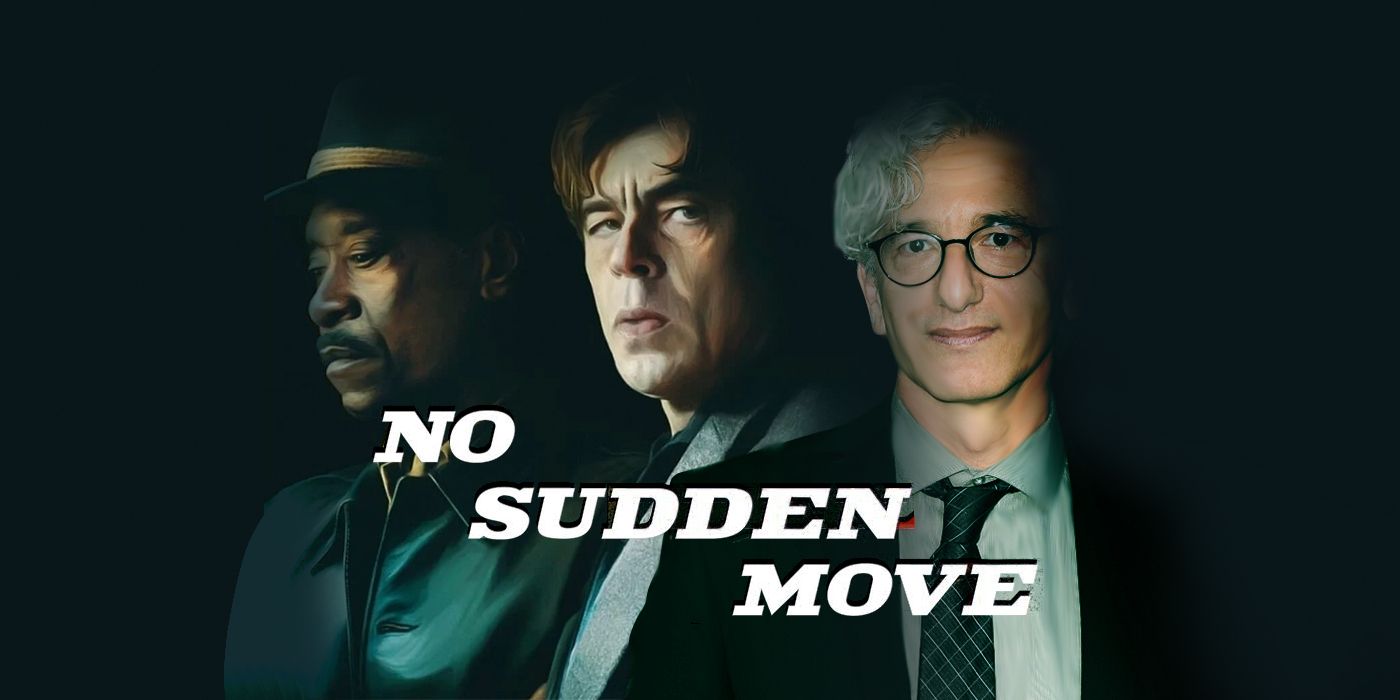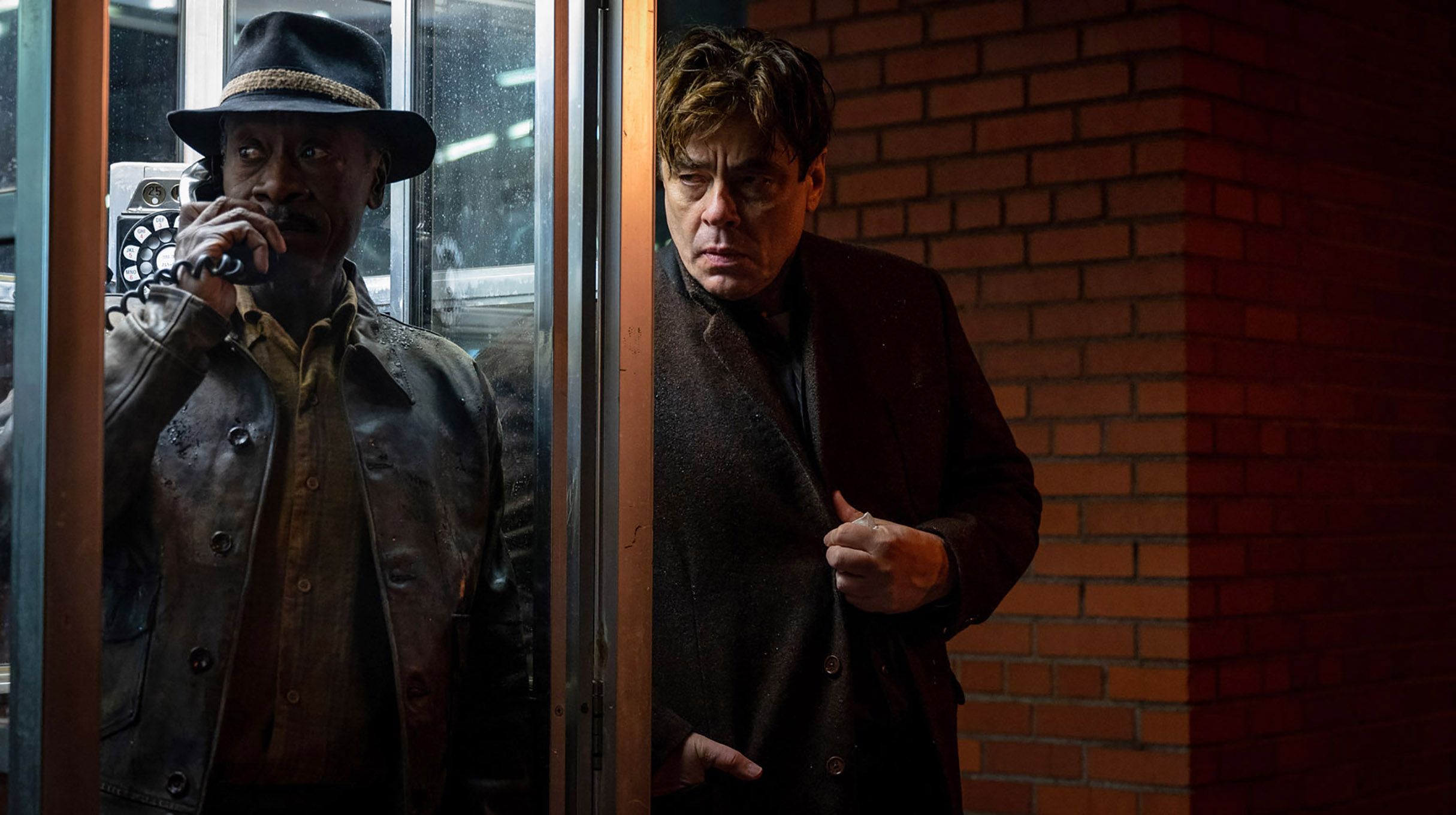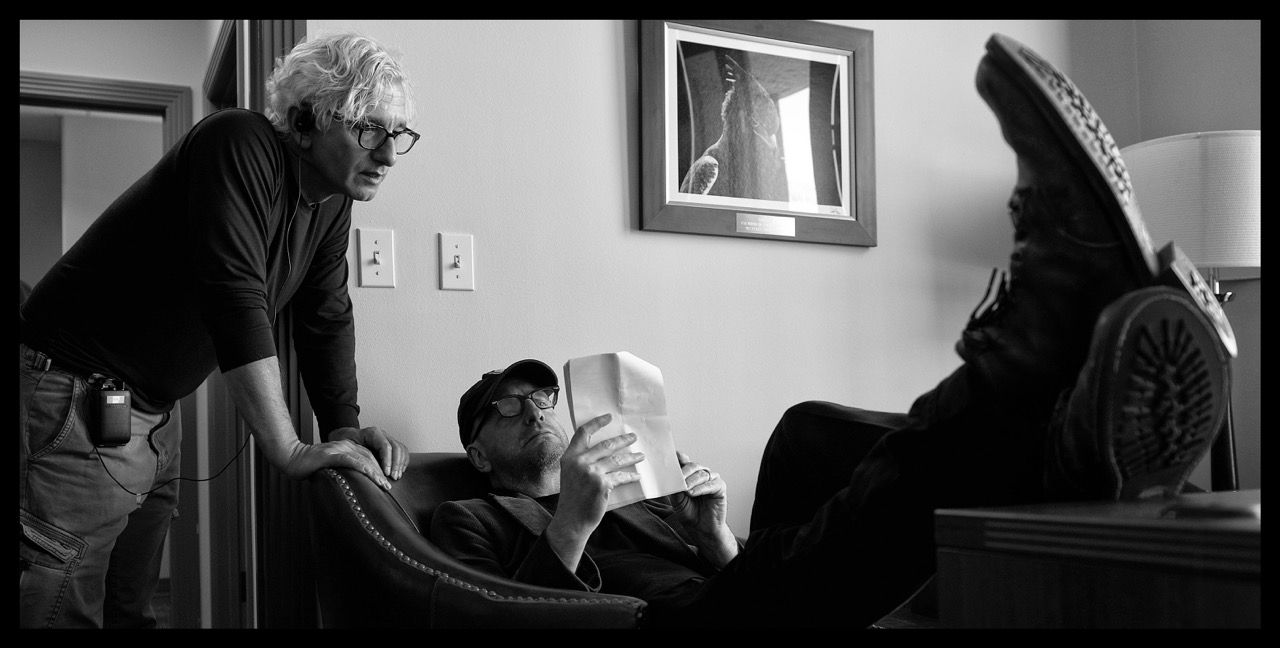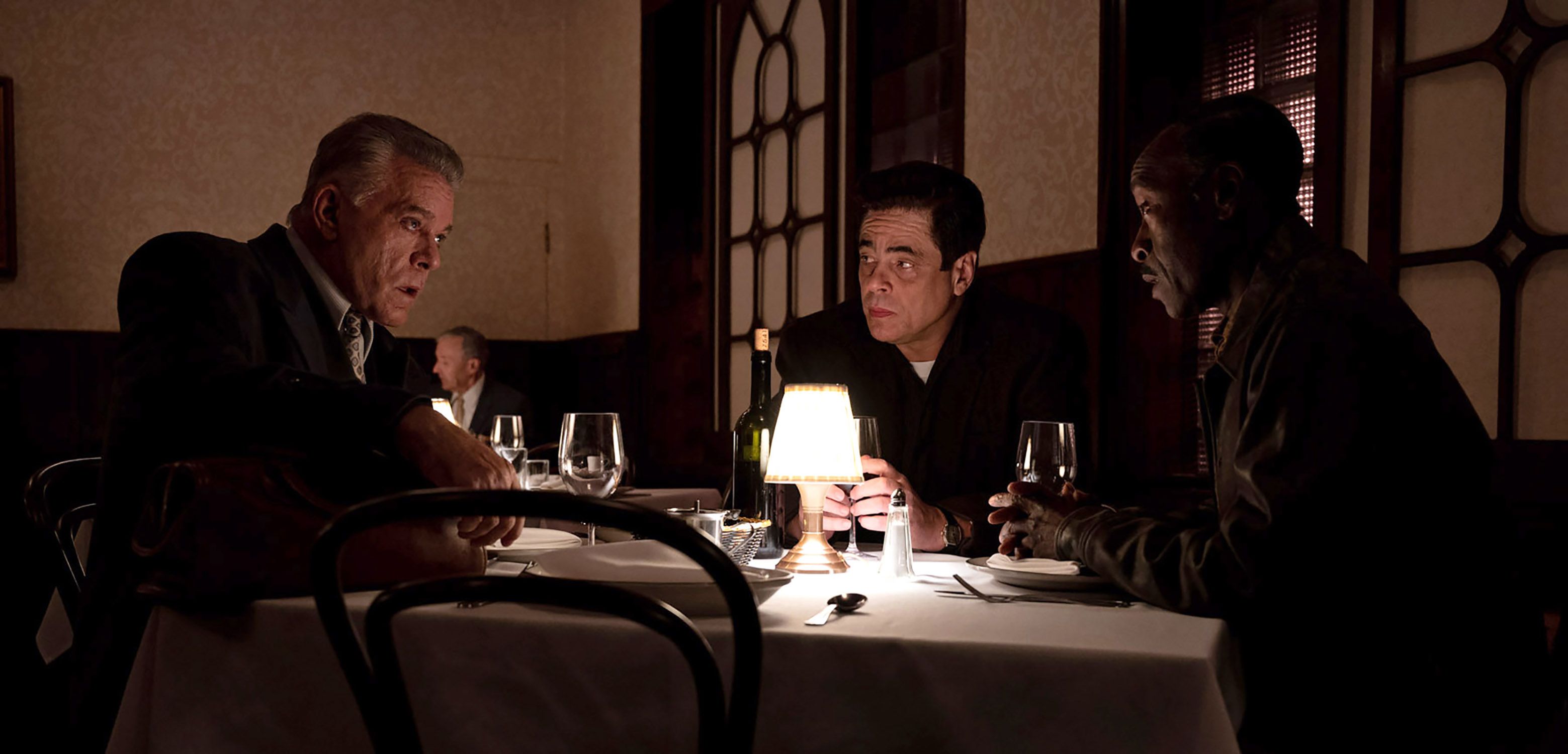The original idea for No Sudden Move, the new crime thriller from director Steven Soderbergh, was quite different from the final product. Initially, Soderbergh and producer Casey Silver planned on hatching a new heist movie with some of the actors Soderbergh worked with on the Ocean’s films. But after Soderbergh reached out to writer Ed Solomon, with whom he worked on HBO’s terrific branched narrative thriller Mosaic, the two began throwing ideas back and forth and quickly hit upon a heist movie that was much smaller in scale, and would be built around actor Don Cheadle. Oh, and it would be set in 1950s Detroit.
The time and place of No Sudden Move ended up being integral to how Solomon’s script took shape, as the Bill and Ted Face the Music co-writer told me during an interview about his new film that a trip to Detroit immensely influenced his entire approach to the story.
Oh yeah, the story. No Sudden Move begins with a group criminals trying to steal something. When the heist goes sideways, they’re left trying to figure out why they were hired, by whom, and where this all leads. It’s a complex, thrilling, and wildly entertaining crime story that is constantly surprising, fleshed out by dimensional characters who are as untrustworthy as they are charismatic. It’s kind of a more stripped down, grittier Ocean’s Eleven – which is no surprise given that it hails from director Steven Soderbergh – and it’s absolutely one of the best films of the year so far.
So I was thrilled to get the chance to speak with Solomon to find out how he went about developing this story in the first place, and the important role that Detroit plays in the entire ordeal. I also asked Solomon how he approached writing a 50s-set crime thriller with a Black lead character, and he went into great detail about the research he conducted and collaborators he leaned on to accurately convey not just Cheadle’s character, but the entire backdrop of Detroit at the time the story is set.
This is part one of a two-part interview, so check back on Collider soon when we delve into spoilers. For this interview, we keep the discussion spoiler-free. No Sudden Move is now streaming on HBO Max.
When and how did you come up with this idea?
ED SOLOMON: After Mosaic and while we were working on this other project, Casey Silver, who's the producer, called and said, "Steven and I are talking about a new thing. Steven wants to do kind of a heist movie for Don [Cheadle] and maybe a couple others and was wondering if you want to throw some ideas around." And I was like, "Yes, for sure." I mean, Mosaic was such a terrific experience for me on both a creative as well as just simply working level. It was a real high point for me and I was thrilled.
Steven was in LA at the time. I remember going out there to get meet with him, and we had lunch, actually, at the 101 Cafe. Initially, he was thinking of doing a slightly bigger movie, more like a cousin to one of the Ocean’s movies. But after we started throwing some of those ideas around, we pretty quickly turned around and went, let's make a really spare, really stark sort of '70s-style noir film that's these three criminals who've never met before hired to do a gig that goes drastically sideways, and the aftermath and just a scramble to figure out why they were hired and by whom and where does that take them? We decided to set the whole thing in Detroit and in the '50s.
From there, I started doing some research about what would the thing they're after be? At the same time, I was researching Detroit and realized that right in that era, the mid-50s in Detroit, was right in the middle of when the auto industry and the tire industry and the oil and gas industry were all tearing up the train tracks and raising these vibrant vital African-American residential business communities, which were Black Bottom and Paradise Valley, and destroying them to make the freeways. So I thought, this is a fascinating backdrop that gives Don's character a kind of moral imperative and some real punch and power, that seemed like a really strong way to set the film.
That's how it started. Once I realized this is about the cat and mouse between Don and Benicio’s character, then the movie laid itself out as, it's going to be this back and forth. The real movie is about the relationship between these two guys, but I want it to keep growing in scope, but in a way that is not overt.
When you say it began kind of as a cousin to the Ocean’s movies, was Don playing the same character from the Ocean’s movies?
SOLOMON: No, no, no. When I say cousin, I meant more sort of tonal cousin. I think he was thinking, “What if I got some of the old gang back together? That would be really fun. We all had a great time working together.” And who would that be? We had talked about a variety of different people that could have played alongside Don. And of course, schedules and COVID and we were about to start in March and then we got shutdown. And then we started up back in September, October. So schedules changed. I think by late summer we knew it was going to be Benicio [Del Toro]. And then when Benicio joined, he had some incredible ideas, not just for his own character, but actually some of the other characters, too.
So did Don. Both guys were incredibly smart and creative with the script. Both of them had great notes. And once we knew it was Don and Benicio, I did another pass on the script. I mean, we always knew it was going to be Don, but once I knew it was Benicio as well, I did a pass to sort of incorporate who he was as a character. When you get a great actor, they get deep into the character. And when they're deep into the character, the movie just moves a little bit with that character, and it becomes a collaboration, not just as it was before with me and the script itself, it becomes the collaboration with the actor and how they're seeing it. And then when it gets up on its feet, the movie starts to shift more.
That's one of the great joys for me is when you have a group of incredible actors and then you've got a masterful director like Steven, who is both very certain of his point of view while also willing to recognize a good idea emerging that we hadn't thought of and incorporate it, which then leads to us going, okay, so what are the ramifications for this?
So when you have that, you've got actors fully inhabiting the characters and then a director who is so on top of his game, as the movie is starting to evolve, you need to pay attention to all the ripple effects of that so that the whole movie is of a whole when you're done. It doesn't feel like it was pieced together. It didn't change that much, but it did move. And I think in every direction that it moved in, it was made better.
Well, as you say, it's set in 1954 Detroit. Race plays a significant role in the film and Don Cheadle is the protagonist. I was curious how you approached that aspect of the film as a white writer tackling these pretty heavy issues.
SOLOMON: That's a great question. Well, I believe we as human beings or we as writers, our job is to get as deep into a character and be as empathetic to that character as possible, to really to be inside that person's worldview. So that involved both talking with Don and working with Don, but also I worked very closely with a man named Jamon Jordan, who I met on the first week in Detroit before I even started outlining the film.
What I did was as I was researching what became the MacGuffin, and as I was researching what the actual thing was that they were trying to steal, I came across this history of Detroit and what happened with Black Bottom and Paradise Valley. And I saw that there was an exhibit at the Detroit Public Library, which was called Black Bottom Street View, where a woman named Emily Kutil, she was a professor at Wayne State, and she had put together this exhibit of photographs that were taken by the City of Detroit before they raised these neighborhoods. Well, the community thought they were taking the pictures to memorialize the community. They didn't realize that the pictures were being taken as a planning mechanism for what the city was intending to do, which was to destroy these neighborhoods.
So these photos were found, preserved, and then mounted in an exhibit at the Detroit Public Library, where you could essentially walk the streets of Black Bottom, which was amazing. It was set up with you walking down these aisles, you turn a corner and then walk down another aisle and you could see life in Detroit in the '50s as captured in real time, almost like one of those Google cars driving through, but it was just people taking literally snapshots that Emily put together and mounted so you could walk through it.
I looked online and I noticed it closes tomorrow. I got on a plane that day and just flew there. And during that time, I made an arrangement with Jamon, who runs an organization called Black Scroll Network, which is dedicated to preserving African-American history of Detroit, but also he does walking tours of African-American Detroit. So I met with Jamon and he became immediately a really integral part of the development of the story. He's credited as a consultant on the film.
I had Jamon, I had Don, I had a lot of other folks working with me on it because I really wanted to make sure not just in the language, but also in the ideas under the language and the backdrop that I was really honoring the people upon whom the movie is going to be based in a certain way. Other movies had gotten into Detroit and kind of ravaged the city and taken what they wanted and created and made up stuff that could suit them. Detroit had been feeling somewhat burned by that. And I wanted to make sure we didn't do that, that to the best extent that we could, we told a story that honored the actual experiences that people had.
Look for much more in the spoiler portion of my interview with Solomon on Collider soon. No Sudden Move is now streaming on HBO Max.




